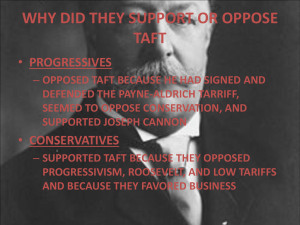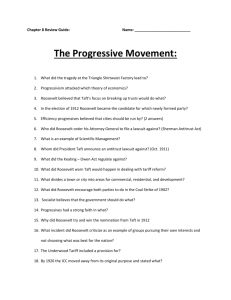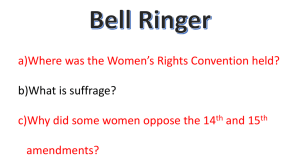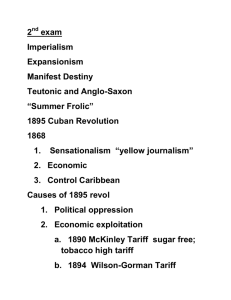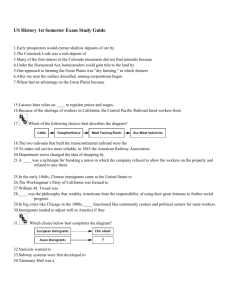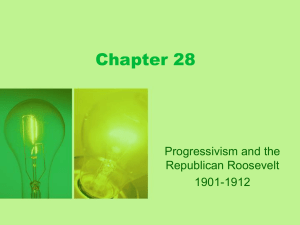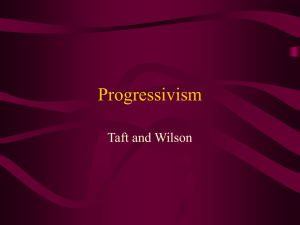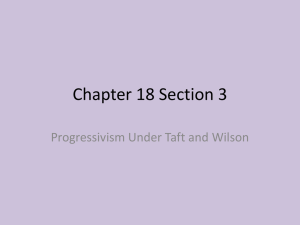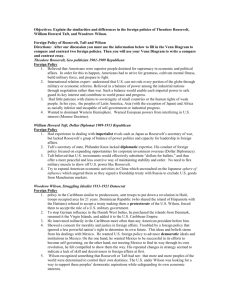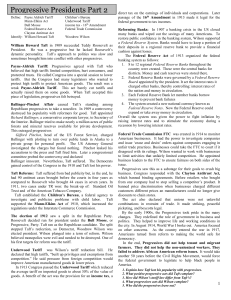New Nationalism v New Freedom handout
advertisement
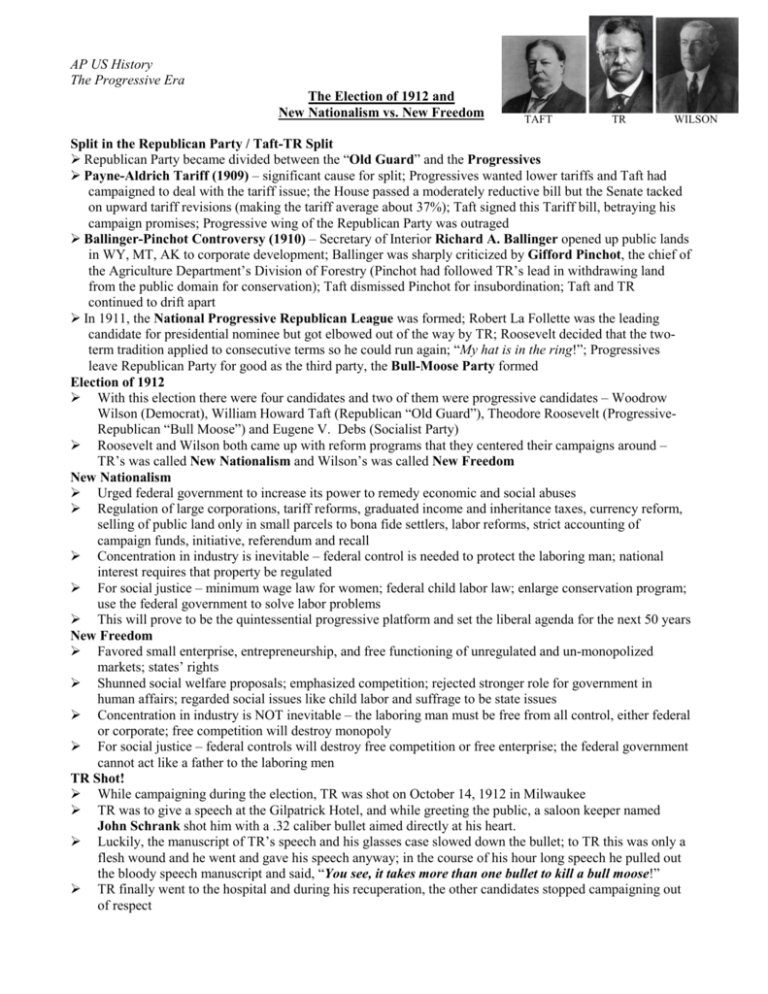
AP US History The Progressive Era The Election of 1912 and New Nationalism vs. New Freedom TAFT TR WILSON Split in the Republican Party / Taft-TR Split Republican Party became divided between the “Old Guard” and the Progressives Payne-Aldrich Tariff (1909) – significant cause for split; Progressives wanted lower tariffs and Taft had campaigned to deal with the tariff issue; the House passed a moderately reductive bill but the Senate tacked on upward tariff revisions (making the tariff average about 37%); Taft signed this Tariff bill, betraying his campaign promises; Progressive wing of the Republican Party was outraged Ballinger-Pinchot Controversy (1910) – Secretary of Interior Richard A. Ballinger opened up public lands in WY, MT, AK to corporate development; Ballinger was sharply criticized by Gifford Pinchot, the chief of the Agriculture Department’s Division of Forestry (Pinchot had followed TR’s lead in withdrawing land from the public domain for conservation); Taft dismissed Pinchot for insubordination; Taft and TR continued to drift apart In 1911, the National Progressive Republican League was formed; Robert La Follette was the leading candidate for presidential nominee but got elbowed out of the way by TR; Roosevelt decided that the twoterm tradition applied to consecutive terms so he could run again; “My hat is in the ring!”; Progressives leave Republican Party for good as the third party, the Bull-Moose Party formed Election of 1912 With this election there were four candidates and two of them were progressive candidates – Woodrow Wilson (Democrat), William Howard Taft (Republican “Old Guard”), Theodore Roosevelt (ProgressiveRepublican “Bull Moose”) and Eugene V. Debs (Socialist Party) Roosevelt and Wilson both came up with reform programs that they centered their campaigns around – TR’s was called New Nationalism and Wilson’s was called New Freedom New Nationalism Urged federal government to increase its power to remedy economic and social abuses Regulation of large corporations, tariff reforms, graduated income and inheritance taxes, currency reform, selling of public land only in small parcels to bona fide settlers, labor reforms, strict accounting of campaign funds, initiative, referendum and recall Concentration in industry is inevitable – federal control is needed to protect the laboring man; national interest requires that property be regulated For social justice – minimum wage law for women; federal child labor law; enlarge conservation program; use the federal government to solve labor problems This will prove to be the quintessential progressive platform and set the liberal agenda for the next 50 years New Freedom Favored small enterprise, entrepreneurship, and free functioning of unregulated and un-monopolized markets; states’ rights Shunned social welfare proposals; emphasized competition; rejected stronger role for government in human affairs; regarded social issues like child labor and suffrage to be state issues Concentration in industry is NOT inevitable – the laboring man must be free from all control, either federal or corporate; free competition will destroy monopoly For social justice – federal controls will destroy free competition or free enterprise; the federal government cannot act like a father to the laboring men TR Shot! While campaigning during the election, TR was shot on October 14, 1912 in Milwaukee TR was to give a speech at the Gilpatrick Hotel, and while greeting the public, a saloon keeper named John Schrank shot him with a .32 caliber bullet aimed directly at his heart. Luckily, the manuscript of TR’s speech and his glasses case slowed down the bullet; to TR this was only a flesh wound and he went and gave his speech anyway; in the course of his hour long speech he pulled out the bloody speech manuscript and said, “You see, it takes more than one bullet to kill a bull moose!” TR finally went to the hospital and during his recuperation, the other candidates stopped campaigning out of respect Schrank was arrested immediately and gave his reason for shooting TR as, “any man looking for a 3rd term ought to be shot.”; he was deemed insane and committed to a mental hospital until his death in 1943 Results of Election of 1912 Wilson defeated Taft & Roosevelt, but only received 41% of the popular vote TR’s Bull Moose party fatally split the Republican party giving Wilson the win New Freedom policies before and after 1914 Before – signed Underwood Tariff Bill; helped push through Federal Reserve Act; prevented a bill that would have helped labor evade anti-trust laws; refused to fight for women’s suffrage; refused to fight for National Child Labor Law; refused to restrict immigration into the United States; separated whites from blacks in federal offices After – almost against all odds, appointed Louis D. Brandeis to the Supreme Court (Brandeis was a leading spokesman for social reform); supported Federal Farm Loan Act (Federal government took responsibility rot he inequality of farmers’ competition); pressured Democrats to accept a federal workman’s and child labor law; announced that tariff laws be changed so business could have some reasonable protection
